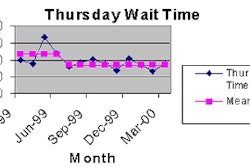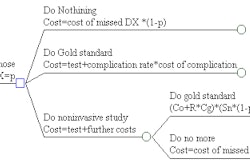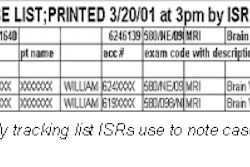Radiology administrators and business managers in the U.S. are all too familiar with the three "D's" of present-day healthcare reimbursement. First a payor denies a claim, which creates a payment delay and impacts a facility’s revenue flow. Then the payor offers the cash-strapped institution a discounted payment on said claim. For many managers, deny, delay, and discount have become a never-ending cycle.
Yet a solution may begin to materialize with a revenue-cycle audit, according to Dr. Gary Dorfman, president and chief medical officer of Health Care Value Systems in North Kingstown, RI. In a presentation at the 2001 Radiology Business Management Association Summit in Scottsdale, AZ, Dorfman outlined a series of steps administrators can take to bolster income: billing cycle optimization, a strategic business plan, and creative and careful contracting.
Follow the money
Billing cycle optimization begins with an internal examination to ascertain the full array of services a practice provides. This spectrum of services then should be compared to services offered at other radiology facilities within the practice’s geographic region.
"The knowledge of what differentiates your practice from other practices in the area is a powerful tool when negotiating managed payment contracts," Dorfman said.
Next, a firm should take a look at its coding and charge structure. A coding system needs to be contemporary, and all fee schedules must be current. Examining payment denials, delays, and discounting can indicate if there are payor-specific issues or process-specific issues. These can be as simple as a single current procedure terminology (CPT) code at a site of service that delays payment by one payor. Process-specific issues indicate that a retooling of procedure workflow may be in order.
Facility managers may want to perform an analysis of such data as revenue cycle times per CPT code; the percentage of denials of submitted claims; and the length of time a resubmitted claim takes per provider. They might also consider creating a clean-claim checklist on a per-provider basis.
Administrators should look at what service opportunities their practice can provide that others can’t. They should audit unbilled services (readings vs. exams performed) and make improvements in the coding and data transfer mechanisms of their institution. On a fundamental level, they will need to review and revise the charge master every year.
Although a facility can opt for an independent audit by a consultant, Dorfman cautions against bringing in an auditor before a preliminary analysis has been performed in-house.
"The more work you do up front, the lower the cost of having a consultant do it for you. And, by conducting the analysis yourself, you can focus the consultants’ attention on problem-solving instead of problem identification," he said.
It is critical that a confidentiality agreement be in place with any outside parties that audit patient data, Dorfman said. Ideally, this nondisclosure agreement will be drawn up and verified by legal counsel.
Proactive reactions
Once the data has been collected and analyzed, an actionable report needs to be generated. "Don’t settle for a report that says ‘we think you might have an issue with x or y’ or ‘here’s some codes you might want to pay attention to,’" Dorfman advised. For a report to be worthwhile it needs to be prescriptive and contain four key components:
- What problems were found.
- Suggestions on how to fix the problems.
- The dollar implications of the fix.
- How to check that the problems were fixed.
The important factor to remember about revenue auditing is that most of the changes a facility implements will not be visible for at least 6-9 months, Dorfman said. Thus, a practice will want to conduct revenue audits on an annual basis only.
Administrators and managers may also want to use the data to create a strategic business plan for their facility. At a minimum, it should include projected income and expenses. Unlike a revenue audit, a business plan needs to be revisited on a regular basis. Therefore, setting intermediate measures, such as a quarterly increase in patient volume or a decrease in procedure time, are crucial to gauging the effectiveness of the plan.
The knowledge gained from conducting a revenue audit can also be used to leverage creative, careful contracts with payors, said Dorfman.
"For instance, you can cobble together a hypothetical fee schedule by looking at what payment modes, payment means, and payment maximums were from the various payors in the various plans," he noted. Armed with this information, an administrator can generally negotiate better payout percentages for a facility when payor contracts are up for renewal.
"It is a lot of work, but it’s necessary work," Dorfman said. "In this time of regulatory compliance, rising costs, and competitive pricing, it’s mandatory that you know your practice inside and out."
By Jonathan S. BatchelorAuntMinnie.com staff writer
June 19, 2001
Related Reading
Compliance program essential for reducing fraud and abuse liability, June 6, 2001
Legal eagle wants to protect your practice from recalcitrant payors, June 5, 2001
eMed to launch free radiology business forum, May 23, 2001
Click here to post your comments about this story. Please include the headline of the article in your message.
Copyright © 2001 AuntMinnie.com



















